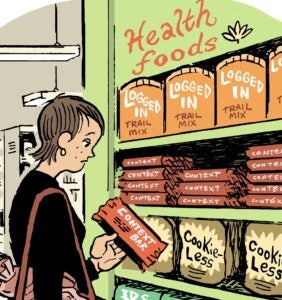“On TV and Video” is a column exploring opportunities and challenges in advanced TV and video. Today’s column is by Greg Morrow, general manager, streaming media group at Bitcentral.
We all know about the value of CTV. But there is rarely any conversation about the spread of audiences and how to reach them.
CTV tends to be discussed as an extension of traditional TV, where mass reach and brand safety are enhanced by the benefits of targeting, programmatic and accurate measurement.
But publishers should also consider the different strategies in which content can be presented and monetized on CTV, such as subscription VOD (SVOD), ad-based VOD (AVOD) and free ad-supported TV (FAST).
CTV is massively attractive to major brands, and publishers stand a better chance of winning ad dollars from other destinations if they can diversify and expand their reach.
According to data from Digital TV Research, the North American Internet TV market will grow 60% over the next five years, reaching $94 billion in 2026. Here are three ways to tap into CTV advertising.
A new opportunity via streaming
Netflix’s foray into advertising has grabbed headlines. It was a massive shift in strategy to embrace advertising, based on the calculation that cheaper, ad-supported subscriptions will increase revenue per user.
Netflix’s basic with ads tier, at $6.99 per month, is $3 cheaper than its basic package without ads. That means the company is banking on making more than $10 per user for basic with ads every month. And the math does add up. Five ads per hour at a rumored $65 CPM means each basic with ads subscriber would need to watch up to 10 hours of content per month to surpass the $9.99 threshold of the basic without ads package. That feels achievable.
Data from Omdia backs up this move, forecasting that Netflix’s ad-tier subscriptions will account for 66% of its revenues in 2027. For CTV advertisers, Netflix will be a robust playground for experimentation.
AVOD tactics will vary, but hold promise
The number of US AVOD viewers will reach 165 million in 2025. And these viewers will use popular platforms like Samsung and Roku, who are keen to partner with quality content providers.
Each has their own set of processes for how content is encoded, how ads are stitched into the stream – using server-side ad insertion (SSAI) or client-side ad insertion (CSAI) – and how reporting is handled.
Still, AVOD represents a huge opportunity to reach a wider audience and take a slice of a growing pie.
Free ad-supported TV (FAST) is more robust than it seems
FAST is commonly used to describe the process of presenting content in a linear channel with strategically placed ad breaks along the way. To the viewer, it’s a similar experience to linear TV. But under the hood, content and ads are being stitched together dynamically, which enables advertisers to better target and track users. Plus, publishers can get into linear TV without the overhead involved in launching a broadcast TV channel.
According to nScreen Media, the FAST market is set to double in the US to reach $4 billion in 2023 – it’s the fastest-growing segment in TV today.
The real value of FAST lies in syndication, as it enables publishers to distribute channels across multiple end-user platforms, including TV OEMs like Samsung, TCL, Vizio and aggregator leaders like The Roku Channel, Tubi and VideoElephant. This helps build audience reach and grow advertising revenue.
Flexibility is key
With CTV on an upward trajectory, publishers would be wise to embrace flexible monetization strategies. Even Netflix has learned that flexibility is essential to unlock the full value of content.
As the streaming giant scrolls through billions of hours of content figuring out where to put the ad breaks, there is an opportunity for publishers to get ahead of the game and increase reach by experimenting with different monetization strategies for their streaming content.
Follow Bitcentral (@Bitcentral) and AdExchanger (@adexchanger) on Twitter.















